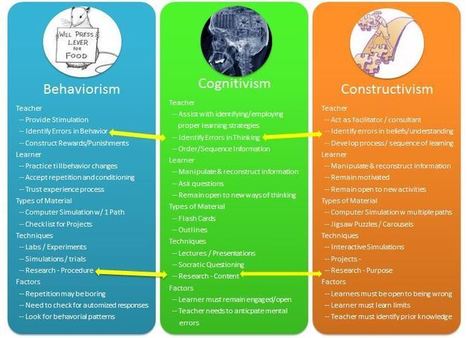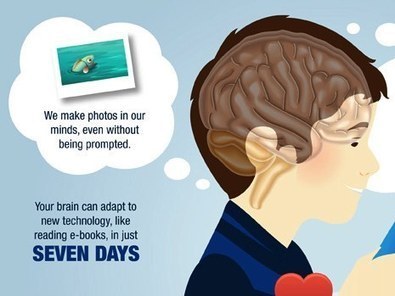
|
Rescooped by Dennis Swender from iGeneration - 21st Century Education (Pedagogy & Digital Innovation) |
Get Started for FREE
Sign up with Facebook Sign up with X
I don't have a Facebook or a X account
 Your new post is loading... Your new post is loading...
 Your new post is loading... Your new post is loading...
No comment yet.
Sign up to comment
Sharaya Baltimore's curator insight,
September 20, 2016 12:29 PM
I like that it gives a comparison of behaviorism, cognitism and constructivism (even though we aren't looking at that school) and it also gives information about the teachers, learner and techniques, etc.
Susmita Dhungel's curator insight,
September 14, 2017 12:03 PM
This article explains the differences between behaviorism, cognitivism, and constructivism. It shows differences in each school's teachers, learners, types of materials, techniques, and factors. 
Krystal Robles's curator insight,
September 21, 2017 11:54 AM
I don't get as to why they all can share these things. The arrows indicate that the things relate to each other.
|
Sharaya Baltimore's curator insight,
September 20, 2016 12:29 PM
I like that it gives a comparison of behaviorism, cognitism and constructivism (even though we aren't looking at that school) and it also gives information about the teachers, learner and techniques, etc.
Susmita Dhungel's curator insight,
September 14, 2017 12:03 PM
This article explains the differences between behaviorism, cognitivism, and constructivism. It shows differences in each school's teachers, learners, types of materials, techniques, and factors. 
Krystal Robles's curator insight,
September 21, 2017 11:54 AM
I don't get as to why they all can share these things. The arrows indicate that the things relate to each other.
Beth Dichter's curator insight,
April 19, 2015 2:23 PM
Do your learners know what happens when the read, or when stories are read to them. This post, from the Open Education Database, provides a visual (that you may want to print out and share with learners and their families) as well as 10 ways that reading helps your brain workout. The list is below. * We make photos in our mind, even without being prompted. * Spoken word can put your brain to work. * Reading about experiences is almost the same as living it. * Different styles of reading create different patterns in the brain. * New languages can grow your brain. * Your brain adapts to reading e-books in seven days. * E-books lack in spatial navigability. * Story structure encourages our brain to think in sequence, expanding our attention spans. * Reading changes your brain structure (in a good way)). * Deep reading makes us more empathetic. To learn more about each of these points click through to the post. |











